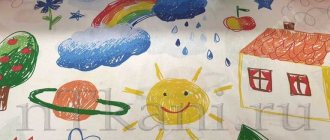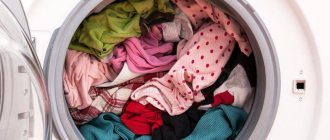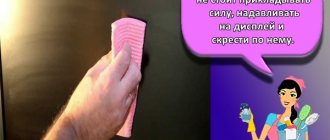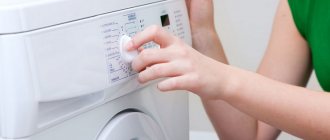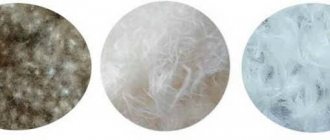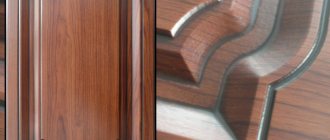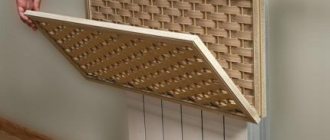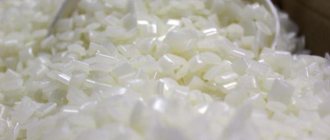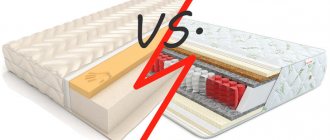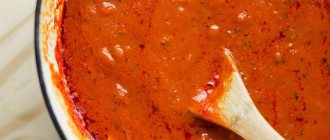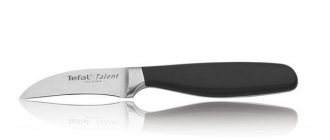The world of fabrics is diverse. Manufacturers offer a huge number of new types. But, for many centuries, there have been traditional and popular ones that will never go out of use. These include percale and satin. They are still relevant today, thanks to their qualities and positive characteristics.
Many, not knowing the qualities of matter, are lost when choosing. Which one is better and what are the differences? Even professional seamstresses find it difficult to understand these materials.
Percale or satin - which is better and why
Most often, bed linen is made from these fabrics. Percale is so dense and durable that it is used for sewing tents, flags, and sails for ships.
Seamstresses love to use percale for sewing bed linen and pillow covers. Due to its dense structure, the material does not allow feathers to escape from the pillowcase. It is comfortable to sleep on such linen. On hot days it cools the body, and on cold days it warms the body.
Satin is also woven from natural cotton. They use a complex weaving pattern. The result is a shiny and soft fabric. At the same time, the front side is glossy and the back side is matte. Bed linen is also made from satin.
Which one is better to choose from these fabrics? Depends on consumer preferences.
How to distinguish percale from satin?
At first glance, it may seem that satin and percale are almost identical fabrics. However, there is still a difference between them. In order to accurately distinguish percale from satin, pay attention to the following nuances:
- Density.
Percale is a fabric that is denser to the touch. Satin is soft and thin. - Smoothness.
Satin is smooth, even on the front side, even a little “sliding”, more like silk. Percale is velvety. From the inside, both percale and satin are softer than from the “face”. - Shine.
The shine of satin is more pronounced. Percale seems a little matte in comparison.
An important difference between satin and percale is their cost. Satin is usually more expensive (if we are talking about natural fabric). At the same time, percale mixed with silk will also be expensive.
What is the difference between satin and percale?
Both types of fabrics are made from high quality cotton. They are very durable. Retains colors well after washing. But there are still differences:
- In terms of strength, percale is the leader. Withstands a greater number of washes - up to a thousand; Therefore, it will last longer. Satin is much softer and thinner. Therefore, it loses its qualities faster. It can only withstand up to three hundred washes. It may lose color and fade.
- There are also differences in the texture of the fabric. Percale is soft, with a velvety surface. Satin is a shiny and smooth material;
- satin is more expensive;
- satin is similar to silk. The interior looks more rich and brilliant. Percale is matte and slightly duller.
Comparison of technical characteristics and properties of fabrics
Analysis of the technical characteristics of each type of material allows you, based on your desires, to choose the material that best suits your preferences. Below is a description of common cotton textile options.
Calico
This is one of the most famous types of fabric for bed linen. The material is a plain weave with a relative density (up to 160 g/m²), which provides it with strength and durability. For the manufacture of bed linen, two types of calico are used: bleached or plain-dyed.
Calico fabric
Note! For public institutions, more durable but rough material is used. For household purposes, calico bed linen is made with thin and durable fibers woven into it; this is the highest quality and most expensive luxury option.
- "Ranfors" is one of several variations of calico, which is more reminiscent of poplin.
- “Standard”, “Comfort”, “Light” are fabrics with varying degrees of density (from 125-110 g/m²), differing in the softness and smoothness of the outer layer. All options have sufficient strength and almost imperceptible shrinkage.
The finer and denser the weave of the threads, the higher the quality. As a result, the cost of the canvas also increases.
Weaving calico
Bedding sets made from calico are affordable and practical. When choosing between percale or calico, it is worth noting that calico also does not fade, absorbs moisture, does not fade and retains heat well. The resistance of this material to bacteria makes it possible to use it for sewing linen for cribs.
The disadvantages include some roughness and looseness of the fabric, visible compactions in the threads, which create a feeling of roughness. Calico wrinkles a lot, and if it contains synthetic fibers, it can pill.
Percale
Percale is often confused with poplin due to its external similarity. The fabric is made from high-quality cotton fibers using plain weave. To avoid pilling, the fibers are treated with a special compound, resulting in a smooth and silky fabric.
Percale weave
The material is wear-resistant and can withstand up to 1000 washes. It easily removes dirt even at low temperatures. When choosing which is better - percale or calico, it is worth remembering that the thread density of the first is higher.
Important! After repeated washings, the fabric does not lose its appearance and remains soft. Since the material is difficult to iron, experts recommend adding conditioner to the water during the rinsing procedure.
You might be interested in All soft fabrics: properties and features of use
If you compare which is better for bed linen - percale or satin, then you should take into account the greater durability of products made from percale.
Percale after washing
Poplin
This material is a worthy competitor to percale or calico with a dense structure in terms of practicality, and in terms of softness - satin. According to the type of dyeing, the material can be plain-dyed, bleached, printed or multi-colored.
A special feature of production is the use of threads of different thicknesses. The base consists of thin fibers, thicker ones are passed through it. This weaving allows you to create a thin and at the same time tear-resistant fabric.
Poplin weave
Most often pajamas, nightgowns, and children's clothes are made from poplin. When comparing which is better - percale or poplin, it is worth noting the unpretentiousness and ease of care of both fabrics. The main advantage is that even after 200 washes the product retains its shape. The cost of a set of poplin linen is almost the same as that of calico, but it is softer and more beautiful.
Important! Poplin is cheaper than percale. But its service life is significantly shorter.
Satin
If the main selection criterion is the softness and delicacy of the fabric, then, of course, you should give preference to satin. It contains 100% high quality natural cotton. The method of weaving threads is called satin or satin.
Satin weave
In the finished fabric, weft threads predominate on the surface, creating a diagonal scar. Satin with a density from 80 to 130 g/m² is available on sale. After mercerization (treatment with sodium hydroxide), the fabric acquires even greater strength and color fastness.
Note! Glossy shine is present only on the front side, on the back the canvas is matte with a slight roughness. It is this characteristic that prevents the sheet from sliding off the bed.
The difference between satin bed linen: it absorbs moisture well, retains heat, and removes static electricity. Products made from this material are designed for long-term use - up to 8 years. Satin is the most expensive type of cotton textile.
Satin for bed linen
Satin. Properties and characteristics
Satin is a beautiful, durable cotton fabric. In ancient times, satin was a type of silk. Gradually, silk threads were removed from the composition. Due to high cost and scarcity. They were replaced with cotton ones. It was woven in China. Today, artificial fiber is also added to the composition of satin.
To increase strength and color fastness, during manufacturing, the threads are treated with acid and alkali. This process is called mercerization. The cost of the material increases. There are manufacturers who do not use mercerization. As a result, you get inexpensive satin. But it won't last long. The price corresponds to the quality.
It is used for sewing clothes, bedding, curtains, bedspreads. The positive properties are that the material does not deform after washing and ironing. Does not lose color brightness. Not an allergen. Therefore, it can be used for sewing children's clothing or linen.
Properties of satin
The properties of the material depend on the quality of the raw materials, the processing of the threads and the weaving method.
- hygroscopicity. Satin is able to absorb moisture. That is, if a person sweats in a dream, he will not wake up from discomfort;
- thermal conductivity. The material maintains body temperature;
- wear resistance. Does not lose color and attractive appearance for a long time;
- does not wrinkle. The fabric is easy to use. The folds lie smoothly and beautifully. Often used for draperies.
Flaws
The main disadvantage of satin is its complex processing. It can be sewn by a professional with a lot of patience. The material is free-flowing. The edges of the products are crumbling. Difficult to cut.
The laundry is too smooth. Many people don't like sleeping on slippery sheets.
Properties of satin for bed linen
Satin is not a raw material used to produce fabric, but a method of weaving it. The main feature is that when creating the fabric, two types of threads of different densities are used. Because of this, the back side is dense and textured, and the front side is smooth and shiny. Externally, satin is very reminiscent of silk - precisely because of this shine. It’s just that cotton is used in its production. True, pure cotton fabric is now increasingly difficult to find; a combination of natural and synthetic materials is more common.
The main characteristics of satin are known to most connoisseurs of comfortable textiles.
- Hygroscopicity. This material absorbs moisture well. If we talk about satin used for bed linen, its ability to absorb sweat is of greatest importance. The main problem with synthetics is precisely that they cannot cope with this task. Because of this, sweat released during sleep remains on the skin, which leads to the appearance of a rash.
- Ease.
- Strength. Tearing fabric by hand is an almost impossible task.
- The fabric retains its shape well after washing and does not lose color or shine (this begins to happen only after two hundred washes).
- The fabric hardly wrinkles. It doesn't have to be ironed.
- It warms in cold weather and cools in summer.
A significant disadvantage of satin is its main feature - smoothness. Some people find it uncomfortable to sleep on such bedding due to constant slipping.
Caring for this fabric is quite easy. For the first time, you need to wash it at a low temperature - 40 degrees. After – 60. You don’t have to iron satin, but if you decide, don’t set the temperature above 90 degrees.
Percale. Properties and characteristics
Percale was invented in India. He was brought to us and stayed forever. It is made from cotton threads. The method of weaving long fibers. Weaved from thin or medium threads. Therefore, the fabric is thin and light in appearance.
The surface is velvety to the touch. Before the production of percale begins, the threads are impregnated with a mixture. This is a special mixture for impregnation, thanks to which the fibers do not fray. The mixture is safe. She glues the threads together. This makes the material durable.
Properties of percale
- durability. It will serve you for many years without changing shape or color. Does not form pellets.
- permeability. Passes air through the fibers. Allows the skin to breathe;
- is not an allergen . Percale is made from environmentally friendly cotton. Therefore, it does not cause allergies;
- unpretentiousness. It does not require special care. Wash well even at low temperatures.
- stains do not stick. Easy to iron;
- keeps warm;
- not electrified. Clothes will not stick to the body;
- does not fade in the sun. You can hang your laundry outside without worrying about the design.
Some manufacturers add synthetics or linen to the fabric. This improves its properties.
Percale is produced in Egypt, Pakistan, and India. In Russia, bedding is sewn in Ivanovo. Percale is used in industry and aviation. For economic purposes. They sew household items - aprons, mittens. Used for embroidery.
Flaws
Expensive fabric. But cheaper than satin. If polyester is added to the fabric, it may cause sweating. This does not happen with natural fabric.
Shrinks slightly in size after washing.
Important: percale items should only be washed in soft water. Do not use strong remedies. Percale cannot be washed with bleach. This will ruin the canvas.
Choosing bed linen: main characteristics
To make the right choice in favor of one material or another, you should delve into the study of the basic properties of fabrics.
Percale is a fabric that originates from India. The name is translated from Persian as “rag”. The fabric is made from natural cotton fibers, which are combed in a certain way and only after that the material is woven. Percale is distinguished by plain weaving, which ensures high strength of the fabric. That is why such material was previously used to make ship sails. The finer type was used to make clothing and bedding items.
For your information! Previously, parachutes were made from percale, which confirms the high strength of the material, as well as products made from it.
Percale fabric
Poplin became popular in the 14th century. Translated from Italian it means “papal”. The fabric owes its name to its place of origin. Poplin was first made in Avignon, where the residence of the Pope was located. Initially, it was made from silk, the reverse side was plain, and the front side was covered with ornaments.
Note! Today, poplin is produced by plain weave of cotton or synthetic fibers with weaving threads of different thicknesses. This causes the presence of small scars on the surface of the canvas. Weaving with synthetics in its composition, in turn, negatively affects the characteristics of the finished fabric, complicating the air exchange of the sheet or duvet cover.
Poplin is often used for sewing men's and women's clothing, curtains, and towels. It comes in different types. The composition may contain silk or wool fibers. This type of fabric is typically used to make high-quality sheets, pillowcases, and duvet covers.
Poplin fabric
The main characteristics of bedding material include:
- High performance. The fabric must be wear-resistant. For example, bed linen made from percale will last at least 7-8 years, and from poplin - 4-5 years.
- High density provides wear resistance. The density of percale and poplin is almost the same - up to 150 g/m².
- Repeated washing and ironing should not affect the quality of the fabric in any way; it remains durable and bright.
- Percale or satin does not form pellets on the surface, does not deform, does not stretch or shrink.
- When producing bed linen material, untwisted cotton fibers should be used, due to this the surface of the fabric is soft and smooth.
- Percale is able to maintain body temperature. Products made from it do not cool in the cold and allow the skin to breathe in hot weather.
- Easy to care for. Percale, for example, wrinkles a lot and requires high-quality ironing and steaming.
You might be interested in What is quilted fabric: use and care of stitching on padding polyester
Natural fabrics for linen
Many people are interested in how percale differs from calico. The fundamental difference is the thread density: for percale it is up to 150 g/m², and for calico up to 125 g/m². Also, fabrics differ in their service life and fading after several washes. In this case, percale is superior to calico: it will last longer and retain its original shades.
Summarize
Satin and percale have similar characteristics. Both types of fabric are natural and environmentally friendly. Percale is stronger and tougher. Satin is lighter and looks richer. There is also a difference in price.
Before purchasing, evaluate your capabilities and preferences. Think about what purpose the fabric is needed. To understand what is better to buy and what fabric to sew from, evaluate their qualities. Consider the pros and cons.
Consumer opinions vary. Some people like the shine of satin, while others like matte percale. It is better to buy two sets of bedding from different fabrics. And evaluate their qualities in practice. In the future, you will know exactly what the differences are between percale and satin.
Twill satin
Satin Munsey
How to wash calico, satin, poplin
Strictly following the instructions for caring for a product of a certain type will extend its service life. For cotton fabrics, the following recommendations should be observed:
Calico
Snow-white bedding is washed at temperatures up to 60°C using powder for natural whites. Colored laundry should be washed at a temperature not exceeding 45°C, after first turning it inside out. Spinning should be done at 600-800 rpm.
Note! Since calico is difficult to iron, it is better to do this while the linen is damp. If the product has embroidery, it is ironed from the reverse side, in all other cases - from the face.
Calico for bed linen
Satin
Satin bed linen is washed at a temperature of 40-60°C. When choosing a washing powder, you should pay attention to the content of bleaching components, which can negatively affect the appearance of colored fabrics with a pattern, embroidery or print.
You might be interested in What is twill fabric: features and characteristics of the material
The exception is pure white textiles. After washing, it is recommended to additionally rinse the laundry in cold water. It is advisable to select the minimum spin in the machine so that the fabric does not shrink. It is better to iron products in a semi-dry state.
Satin after washing
Percale
If products made from it are washed for the first time, the water temperature should not exceed 20°C. For subsequent washes, you can set the temperature indicated on the tags, but not more than 60°C.
It is not recommended to starch a percale sheet, since as a result of this procedure it absorbs moisture less well and becomes less comfortable. Do not wash at the same time as other types of fabrics to prevent deformation of the fibers. If your machine has an additional rinse function when washing percale, it is advisable to turn it on.
How to wash percale
Poplin
For minor stains, it is recommended to wash poplin products by hand. Warm water at 30-40°C is taken into a basin and the powder is dissolved in it. The product is immersed in the liquid and soaked for 20 minutes. Use gentle movements to wash, paying special attention to areas with severe contamination. Then the product is rinsed twice with cool water and, after squeezing lightly, hung out to dry.
Poplin is machine washed at 40°C. If the fabric contains synthetic, silk or woolen threads, washing is done at a temperature of 30°C on a gentle cycle, and spinning is limited to 600 rpm.
If all recommendations are followed, long service life and comfortable sensations when using cotton underwear are guaranteed by the manufacturer.
Ironing poplin
